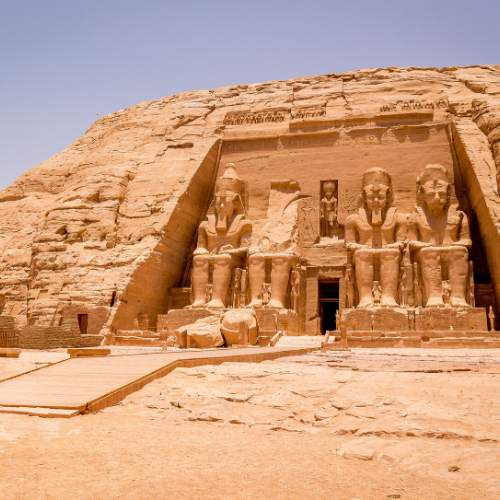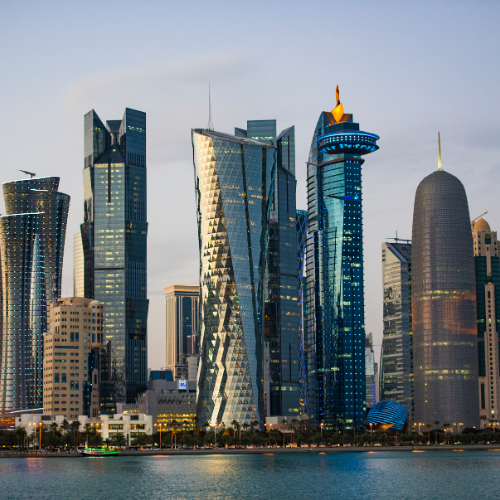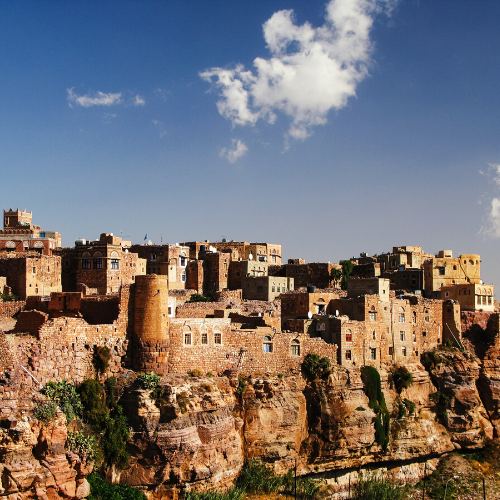The Middle East
The Middle East, known as the “cradle of civilization”, was only coined its name prior to World War II. British commanders were given this region to cover with their forces, explaining this region’s wide area including countries in Africa, Asia, and Europe. Because of its unclear region name, countries such as Afghanistan, Pakistan, and even Greece were considered to be in the Middle East because of geographical reasons, but a clear list of countries in the Middle East has now been established. Before it was given its modern name, it was home to many early civilizations in Mesopotamia and Egypt. The Middle East, from its origin, has had rich and fertile soil due to its plentiful rivers such as the Tigris, Euphrates, and Nile. Together, these rivers made up the origin of civilization and agriculture in the area known as The Fertile Crescent, which included the ancient states of Assyria, Elam, Mesopotamia, Phoenicia, and Egypt, almost covering the modern-day area of the Middle East.
It has seen many empires come and go through its ancient history. An example of this is the Sumerians in Mesopotamia; who were the first to leave behind a form of written culture to help archaeologists now research their history. The Sumerians left behind tablets filled with pictograms and a form of written language called cuneiform. The Sumerians followed by the Akkadian, Ur, and Babylonian Dynasties with notable rulers such as Sargon I and Hammurabi helped define the area and its surrounding states. Throughout time, it has seen the passing of multiple dynasties and the immigration of new groups such as the Kassites and Hurrians from areas such as central Asia.
Religion-wise, the region followed the teachings of Babylonian astrology and the cosmogonies of different philosophers such as Thales and Anaximander. Following close by was Judaism which became the dominant religion in the 1st century AD. After Christianity (a religion with close historical ties to Judaism) was established, it converted many early Jewish followers. In the eastern areas of the Middle East, such as Iran, another monotheistic religion became popular named Zoroastrianism, but most of these followers did convert to Islam. In modern times, the dominant religion of the region is Islam with the only exception being Israel and some of the Palestinian areas. However, within this region, there are multiple sects of Islam practiced such as the Shia and Sunnis. These different sects are the cause of war and tensions between countries in the Middle East. The tensions can be found in the Sunni countries of Jordan, Saudi Arabia, and more attacking early Shia country of Iraq and an ongoing civil war between the Shias and Sunnis of Iraq. Judaism is mainly practiced in Israel, and although countries such as Lebanon and Egypt have a majority religion of Islam, there are populations of practicing Christians in these areas.
The primary language of the Middle East is Arabic. In fact, the majority of the countries, 13 out of the 18, in the Middle East are Arabic speaking countries who are part of the Arab League. The Arab League was created for all Arabic speaking nations to work together to settle conflicts within these countries (especially to fix animosity associated with Palestinian independence) peacefully. This initiative definitely has good intentions; however religious fighting has multiple revolts have heavily damaged the relationships between Arabic speaking countries in the Middle East. Hebrew is spoken in Israel, Persian in Iran, as well as Pashto, Turkish, and other Turkic languages in Turkey and Afghanistan.
The Middle East, known as the “cradle of civilization”, was only coined its name prior to World War II. British commanders were given this region to cover with their forces, explaining this region’s wide area including countries in Africa, Asia, and Europe. Because of its unclear region name, countries such as Afghanistan, Pakistan, and even Greece were considered to be in the Middle East because of geographical reasons, but a clear list of countries in the Middle East has now been established. Before it was given its modern name, it was home to many early civilizations in Mesopotamia and Egypt. The Middle East, from its origin, has had rich and fertile soil due to its plentiful rivers such as the Tigris, Euphrates, and Nile. Together, these rivers made up the origin of civilization and agriculture in the area known as The Fertile Crescent, which included the ancient states of Assyria, Elam, Mesopotamia, Phoenicia, and Egypt, almost covering the modern-day area of the Middle East.
It has seen many empires come and go through its ancient history. An example of this is the Sumerians in Mesopotamia; who were the first to leave behind a form of written culture to help archaeologists now research their history. The Sumerians left behind tablets filled with pictograms and a form of written language called cuneiform. The Sumerians followed by the Akkadian, Ur, and Babylonian Dynasties with notable rulers such as Sargon I and Hammurabi helped define the area and its surrounding states. Throughout time, it has seen the passing of multiple dynasties and the immigration of new groups such as the Kassites and Hurrians from areas such as central Asia.
Religion-wise, the region followed the teachings of Babylonian astrology and the cosmogonies of different philosophers such as Thales and Anaximander. Following close by was Judaism which became the dominant religion in the 1st century AD. After Christianity (a religion with close historical ties to Judaism) was established, it converted many early Jewish followers. In the eastern areas of the Middle East, such as Iran, another monotheistic religion became popular named Zoroastrianism, but most of these followers did convert to Islam. In modern times, the dominant religion of the region is Islam with the only exception being Israel and some of the Palestinian areas. However, within this region, there are multiple sects of Islam practiced such as the Shia and Sunnis. These different sects are the cause of war and tensions between countries in the Middle East. The tensions can be found in the Sunni countries of Jordan, Saudi Arabia, and more attacking early Shia country of Iraq and an ongoing civil war between the Shias and Sunnis of Iraq. Judaism is mainly practiced in Israel, and although countries such as Lebanon and Egypt have a majority religion of Islam, there are populations of practicing Christians in these areas.
The primary language of the Middle East is Arabic. In fact, the majority of the countries, 13 out of the 18, in the Middle East are Arabic speaking countries who are part of the Arab League. The Arab League was created for all Arabic speaking nations to work together to settle conflicts within these countries (especially to fix animosity associated with Palestinian independence) peacefully. This initiative definitely has good intentions; however religious fighting has multiple revolts have heavily damaged the relationships between Arabic speaking countries in the Middle East. Hebrew is spoken in Israel, Persian in Iran, as well as Pashto, Turkish, and other Turkic languages in Turkey and Afghanistan.














